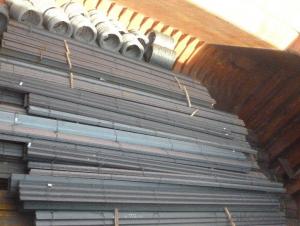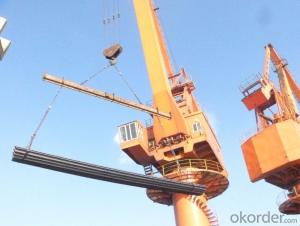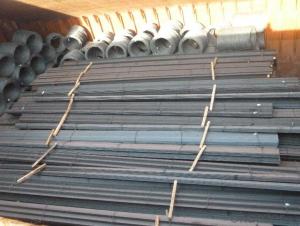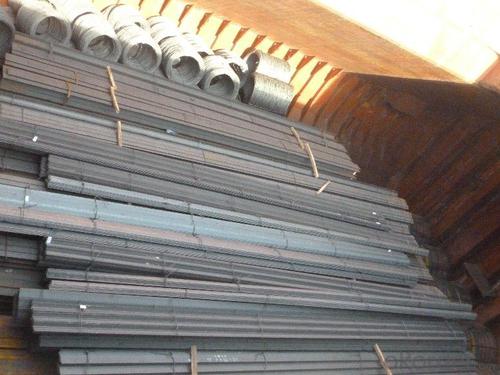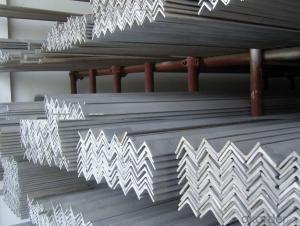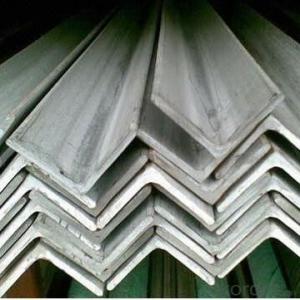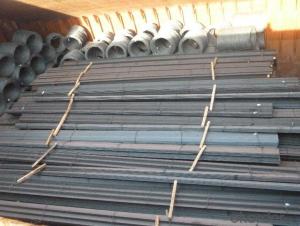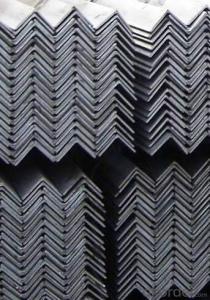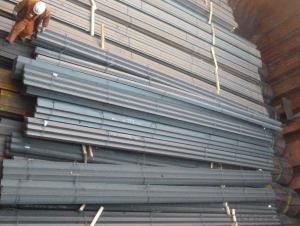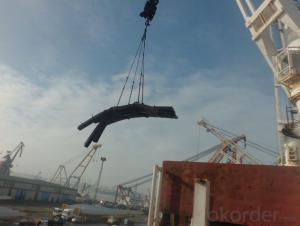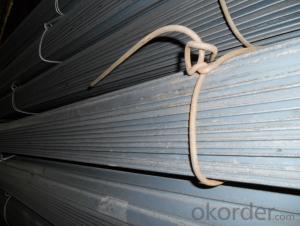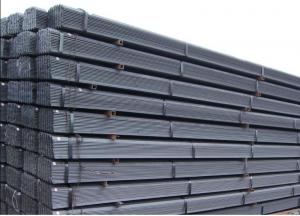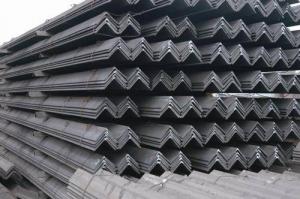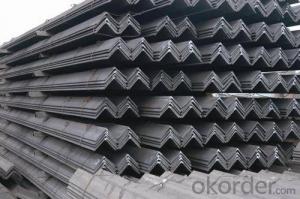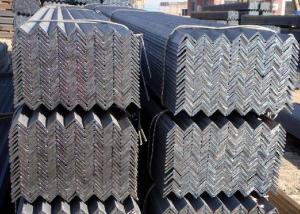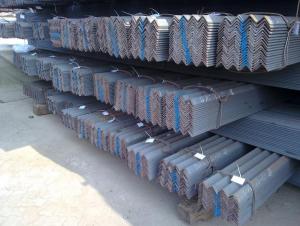Hot Rolled Equal Angle Carbon Steel Bar
- Loading Port:
- China Main Port
- Payment Terms:
- TT or LC
- Min Order Qty:
- -
- Supply Capability:
- -
OKorder Service Pledge
OKorder Financial Service
You Might Also Like
Product Description:
OKorder is offering Angle Bar at great prices with worldwide shipping. Our supplier is a world-class manufacturer of steel, with our products utilized the world over. OKorder annually supplies products to European, North American and Asian markets. We provide quotations within 24 hours of receiving an inquiry and guarantee competitive prices.
Product Applications:
According to the needs of different structures, Angle can compose to different force support component, and also can be the connections between components. It is widely used in various building structures and engineering structures such as roof beams, bridges, transmission towers, hoisting machinery and transport machinery, ships, industrial furnaces, reaction tower, container frame and warehouse etc.
.
Product Advantages:
OKorder's Angle Bar are durable, strong, and resist corrosion.
Main Product Features:
· Premium quality
· Prompt delivery & seaworthy packing (30 days after receiving deposit)
· Corrosion resistance
· Can be recycled and reused
· Mill test certification
· Professional Service
· Competitive pricing
Product Specifications:
1. Invoicing on theoretical weight or actual weight as customer request
2. Length: 6m, 9m, 12m as following table
3. Sizes
Payment:
-Invoicing on theoretical weight or actual weight as customer’s request.
-FOB, CFR or CIF.
-Regular terms of payment:
1, 30% payment in advance, the remaining balance (70% payment) against the copy of B/L.
2, 30% payment in advance, the remaining balance (70% L/C) against the copy of B/L.
3, Negotiable.
-The payment terms will be written in contraction detailed.
FAQ:
Q1: Why buy Materials & Equipment from OKorder.com?
A1: All products offered byOKorder.com are carefully selected from China's most reliable manufacturing enterprises. Through its ISO certifications, OKorder.com adheres to the highest standards and a commitment to supply chain safety and customer satisfaction.
Q2: How do we guarantee the quality of our products?
A2: We have established an advanced quality management system which conducts strict quality tests at every step, from raw materials to the final product. At the same time, we provide extensive follow-up service assurances as required.
Q3: How soon can we receive the product after purchase?
A3: Within three days of placing an order, we will begin production. The specific shipping date is dependent upon international and government factors, but is typically 7 to 10 workdays.
Q4: What makes stainless steel stainless?
A4: Stainless steel must contain at least 10.5 % chromium. It is this element that reacts with the oxygen in the air to form a complex chrome-oxide surface layer that is invisible but strong enough to prevent further oxygen from "staining" (rusting) the surface. Higher levels of chromium and the addition of other alloying elements such as nickel and molybdenum enhance this surface layer and improve the corrosion resistance of the stainless material.
Images:
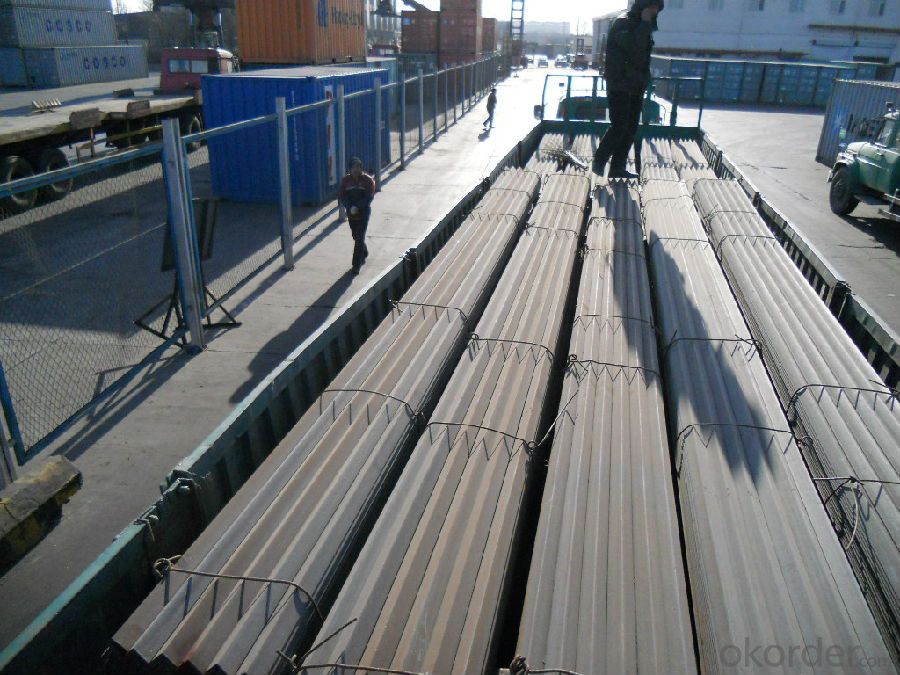
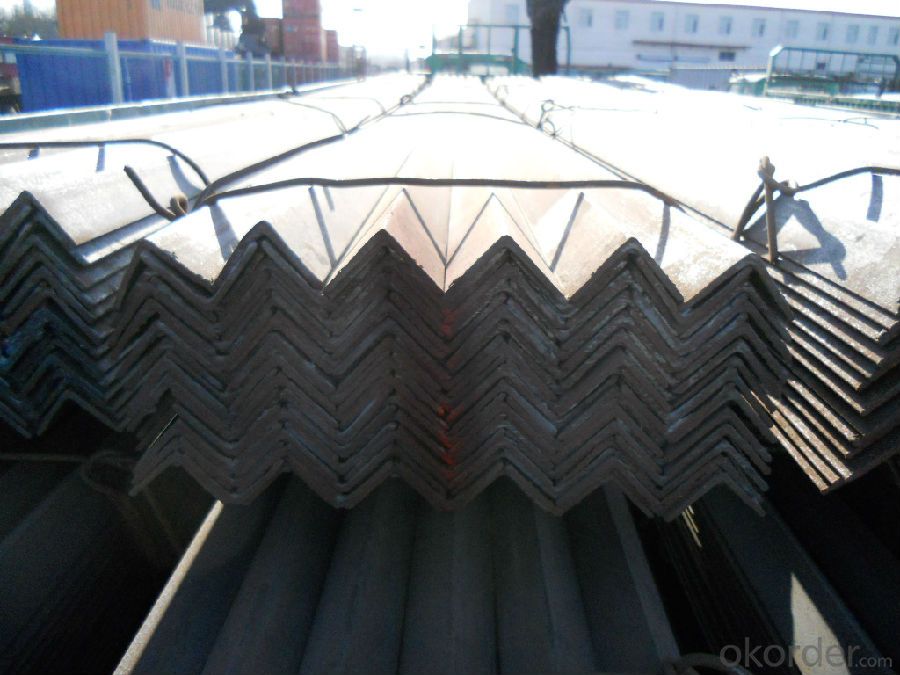
- Q: How do you calculate the shear capacity of a steel angle?
- The shear capacity of a steel angle can be calculated using the formula: Shear Capacity = 0.6 * Fy * Ag, where Fy is the yield strength of the steel and Ag is the gross area of the angle.
- Q: Can steel angles be used in seismic or high-wind areas?
- Yes, steel angles can be used in seismic or high-wind areas. Steel angles are commonly used in construction for their strength and durability. They provide structural support and can withstand seismic forces and high winds when properly designed and installed. The use of steel angles in these areas is often subject to specific building codes and regulations, which ensure that the structures are capable of withstanding the forces generated by earthquakes or strong winds. Engineering analysis and design considerations must be taken into account to ensure the appropriate size, configuration, and connection details of the steel angles in order to meet the required safety standards.
- Q: How do you design connections for steel angles to steel beams?
- When designing connections for steel angles to steel beams, several factors need to be considered. Firstly, the load-bearing capacity of both the angles and beams should be determined based on the applied loads. Secondly, the connection type, such as bolted or welded, needs to be selected considering factors like ease of fabrication and installation, structural requirements, and maintenance considerations. The connection should be designed to ensure sufficient strength, rigidity, and stability, while also considering factors like fatigue, corrosion, and fire resistance. Additionally, relevant design codes and standards should be followed to ensure safe and efficient connections.
- Q: What are the limitations of using steel angles in certain applications?
- When considering the utilization of steel angles in specific applications, one must take into account several limitations. To begin with, steel angles may not be suitable for applications that necessitate high strength or load-bearing capacities. While steel angles are generally robust and long-lasting, they may not be capable of withstanding exceedingly heavy loads or forces. In such instances, alternative types of structural steel sections, such as I-beams or hollow sections, may be more appropriate. Additionally, steel angles may not be ideal for applications that require precise dimensions or tight tolerances. Due to the manufacturing process, steel angles can exhibit slight variations in size and shape, which may be unacceptable in certain applications. In these circumstances, it may be necessary to utilize custom-made or precision-machined steel components. Moreover, steel angles may possess limitations in terms of corrosion resistance. If the application involves exposure to harsh environments, such as marine or chemical settings, the steel angles may deteriorate over time. In such situations, materials with superior corrosion resistance, such as stainless steel or aluminum, may be more suitable. Lastly, steel angles may not deliver the desired aesthetic appearance in certain applications. Although steel angles are commonly employed in structural and industrial settings, they may not be visually appealing or compatible with architectural or decorative applications. In these cases, alternative materials or finishes may be preferred to achieve the desired aesthetics. In summary, while steel angles offer numerous advantages in terms of strength, versatility, and cost-effectiveness, they do have limitations in certain applications. It is crucial to thoroughly evaluate the specific requirements of the application and consider these limitations before deciding to utilize steel angles.
- Q: Are steel angles resistant to impact?
- Steel angles are known for their exceptional strength and durability, which makes them highly resistant to impact. Due to their structural design and composition, steel angles can withstand significant forces without deforming or breaking. This resistance to impact is attributed to the hardness and toughness of steel, allowing it to absorb and dissipate energy from external forces. Additionally, steel angles can be further reinforced or coated to enhance their impact resistance, making them a popular choice in various applications such as construction, automotive manufacturing, and industrial machinery. However, it is essential to note that the impact resistance of steel angles can vary depending on factors such as the specific grade of steel used, the angle's dimensions, and the manner in which it is installed or utilized.
- Q: What are the different grades of steel used for manufacturing steel angles?
- Manufacturing steel angles involves the use of various grades of steel. These grades include: 1. Mild Steel: This is the most frequently utilized grade for producing steel angles. It boasts a low carbon content and is reasonably priced. Mild steel angles are suitable for a wide range of applications and possess excellent weldability and formability. 2. High-strength low-alloy (HSLA) steel: This grade incorporates small quantities of alloying elements such as copper, vanadium, or niobium, which augment its strength and toughness. HSLA steel angles are commonly employed in structural applications that demand high strength and durability. 3. Stainless Steel: Stainless steel angles are crafted from alloys that contain a significant chromium content, offering outstanding resistance to corrosion. These angles find common usage in environments where corrosion poses a concern, such as coastal areas or chemical plants. 4. Carbon Steel: Carbon steel angles are comprised of a combination of iron and carbon, with carbon content typically ranging from 0.05% to 2.1%. The higher the carbon content, the stronger and harder the steel becomes. Carbon steel angles are frequently employed in construction and machinery manufacturing. 5. Alloy Steel: Alloy steel angles are created by introducing various alloying elements like manganese, nickel, chromium, or molybdenum into carbon steel. These additions enhance the strength, hardness, and resistance to wear and corrosion of the steel. Alloy steel angles find common usage in heavy-duty applications like mining equipment or industrial machinery. The selection of steel grade for manufacturing steel angles depends on the specific requirements of the application, including desired strength, durability, corrosion resistance, and cost considerations.
- Q: How many meters is one angle steel?
- According to the specification number, the selection range of the domestic angle iron is 3 - 9m, 4 - 12M, 4 - 19m, 6 - 19m four scopes. The length of Japanese steel angle is chosen from 6 to 15m.
- Q: What are the different methods for joining steel angles?
- There exist various techniques for connecting steel angles, each possessing its own advantages and applications. Welding, bolting, and utilizing adhesive or epoxy are among the most frequently employed methods. Welding is a favored approach for joining steel angles due to its capacity to establish a sturdy and enduring connection. The process involves melting the edges of the angles using a welding torch, allowing them to cool and solidify, thereby creating a bond between the two pieces. Depending on the project's specific requirements, welding can be executed using diverse techniques such as arc welding, MIG welding, or TIG welding. Bolting is another commonly utilized method for joining steel angles, whereby nuts and bolts are employed to secure the angles together. This technique permits easy disassembly and reassembly, making it suitable for scenarios that demand flexibility. Additionally, bolting does not require any heat or special equipment, rendering it a relatively straightforward and cost-effective option. Utilizing adhesive or epoxy represents a non-traditional technique for connecting steel angles. This method involves the application of a potent adhesive or epoxy onto the contact surfaces of the angles, which are subsequently pressed together. Particularly when employing high-strength adhesives designed for metal bonding, this approach can yield a robust and long-lasting bond. Adhesive bonding is often employed in situations where welding or bolting may prove impractical or undesirable, such as when dealing with thin or delicate materials. Ultimately, the selection of a joining method for steel angles depends on various factors, including the specific application, desired strength and durability, ease of installation, and the necessity for disassembly or flexibility. Consulting with an expert or engineer is recommended to determine the most suitable joining method for a particular project.
- Q: What are the different standards for steel angles?
- The different standards for steel angles include the American Society for Testing and Materials (ASTM) A36 standard, which is commonly used in the United States, and the European standard EN 10025, which is widely used in Europe. These standards outline the specific requirements for the chemical composition, mechanical properties, and dimensions of steel angles, ensuring consistency and quality in their production and use.
- Q: How do you determine the appropriate length of a steel angle for a specific application?
- To determine the appropriate length of a steel angle for a specific application, you typically need to consider the dimensions and requirements of the project. This involves assessing factors such as the desired angle, the load and weight it will be subjected to, the structural support needed, and any specific design or building codes that must be adhered to. Consulting engineering and construction guidelines, performing calculations, and seeking professional advice can help ensure the correct length of steel angle is determined for the application.
Send your message to us
Hot Rolled Equal Angle Carbon Steel Bar
- Loading Port:
- China Main Port
- Payment Terms:
- TT or LC
- Min Order Qty:
- -
- Supply Capability:
- -
OKorder Service Pledge
OKorder Financial Service
Similar products
Hot products
Hot Searches
Related keywords
